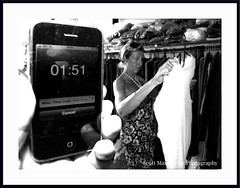Deep thinking is required to work out the optimal offer for your customers and prospects.
Once you have a good understanding of your customer needs you can begin to formulate your offer. Start out by asking these basic questions and remember that often best ideas come from people who are closest to the customer!
- What problem do you solve and what is unique about the way you do it? E.g.: Sometimes all it takes is a different attitude. Max Super (a Superannuation company) in Australia took a boring and jargon laden product category and made it fun, by making fun of itself and the industry thus appealing to a younger audience. Groupon and it’s now many copy-cats have taken the concept of online auctions and group buying, word-of-mouth, and consumer desire for a bargain to create a whole new fast growing category.
- What are the different market segments?
- What are the Competitors offering? If your offer is no different to your competitors then how do you expect prospects to choose your company? If your offer is essentially the same and in many cases it is, then the how you communicate (promote) that offer to your target audience becomes paramount. Which is why “we marketers” focus so much on the Promotion versus all the other parts of the Marketing Mix.
- What is the Opportunity Cost of your product? E.g.: what will your customers miss out on or give up by buying your product or service? How can you minimise this cost?
- What features are the most / least valued? The innovation that is iPod came about precisely using this type of analysis. There were many much more technically superior MP3 players on the market when iPod came on the scene, but the ipod gave the simplicity of operation to consumers that they craved and took away the features they didn’t value (complexity). Can you imagine if this was done with Video Recorders / Players or software like Microsoft Word – where the vast majority of users only used about 10% of the product’s potential?
- What is the Pricing Structure & Role of Price? E.g.: Price is the simplest and oldest signal of any market place. We have all grown up with the phrase “you get what you pay for”, so make sure you align your price with the perceptions you want to create. Telling prospects that you have the best software, service or widget on the market at the cheapest price may simply mean you will not be believed, so make sure you either price it as being “the best” or take great care explaining how you can deliver it at this price point to make sure your story is credible.
- What is the Distribution Strategy?
- What is the Selling Process?
Make sure that your distribution strategy and sales process are aligned with your customer buying process.
Another great way of discovering new ways of solving old problems is actually examining the existing and recurring customer problems and frustrations and then overcoming those. Every customer problem is actually an opportunity in disguise to improve your customers’ brand experience.
 Image by maxymedia via Flickr
Image by maxymedia via Flickr


Recent Comments